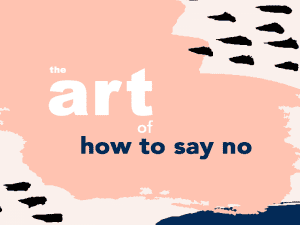So you’ve heard of the wild success some people have found selling NFTs. You might be wondering how to create an NFT of your own. Who wouldn’t want to make millions by selling a tweet?
But there’s more to this digital marketplace than figuring out how to create NFTs. It’s even more than figuring out which marketplace has the lowest transaction fees.
Let’s take a look at what an NFT is, how to create one, where to sell one, and ask whether you should even bother to do it at all.
What is an NFT?
But before you figure out how to create an NFT, you kind of need to know what an NFT is.
In simple terms, an NFT is a non-fungible token.
What is a non-fungible token?
Even though it sounds like something that cannot be turned into a fungus, non-fungible is the opposite of fungible, which is something that can be replicated and exchanged for equal value.
If I hand you a dollar and you give me a nicer-looking dollar because the vending machine wouldn’t take mine, we both still have a dollar.
If I hand you a dollar and you Venmo me $1, we both have one dollar.
A dollar is a dollar is a dollar, which means they are fungible tokens.
But non-fungible means it cannot be replicated for something of equal value. In this instance, digital assets become the token. You can’t exchange that piece of art for the exact same piece of art. Even if the artist sold multiple editions of the same art piece, the blockchain information wouldn’t be the same. Even though it looks identical on the computer screen, it is “different.”
Yeah, I don’t get it either. But I’m not the person you sell your NFT to. Nor am I the person telling you if it’s ethical or not to participate in an industry that consumes as much energy as all of Switzerland.
I’m just the person letting you know how to do it.
How to Create an NFT
It’s hard to define what an NFT is because there seems to be a little limit on what it cannot be. As long as it’s digital, someone has probably already made an NFT of it.
Some of the more ridiculous examples include:
- A signed tweet for a little under $3 million
- A gif of a Gucci ghost for $3,600
- Digital toilet paper for $4,100
- Digital perfume for $18,000
- The audio of farts for $85 and up
- The meme of side-eye Chloe for $73,953

So, for better or worse, the sky’s the limit. If you can present it in a digital file, you can sell NFTs of it. Whether it’s pieces of art or digital farts, you can present it to the world for purchase to make those sweet NFT sales.
Whether you use Procreate, Illustrator, FinalCut Pro, or just the voice memo app on your phone, you have the power to sell NFTs of your digital creation.
How to Sell Your NFT Creations
So if you can digitally dream it, you can NFT it.
But how do you sell your NFT?
Well, how complicated do you want to make your journey?
If you want to completely avoid platforms taking fees, you can create a smart contract of your own and deploy the NFT into your blockchain of choice. Then you’ll need to mint your own tokens.
If you’re just looking to dip your toes into the industry, make your life easier and use a platform. They’ll lead you through the process without too much complication. And yes they’ll take fees, but they’ll also get you into a marketplace with buyers.
So: fees. How do they work? How much will I lose?
It completely depends on what marketplace you use.
Some collect fees upfront. Others collect a percentage after a sale. And some require you to “initialize” your account for $400. This is where research becomes crucial to selecting your platform.
Each Platform is Different
Each platform also comes with its own sets of rules and stipulations. Some only allow you to sell one copy. Others don’t allow you to auction it off, and instead, you can only sell at a fixed price. And some allow you to list them for free, but if you take them down, you need to pay a fee.
One of the major decisions you have to make is if you want to mint before or after you make a sale. For example, Rarible lets you use a “lazy minting” system. This means you can post your NFT for sale without writing it into the blockchain. After someone purchases it, those fees will get added to the transfer fees you incur when transferring ownership. So while you may ultimately end up paying more, you won’t have to shell out cash upfront for an NFT that never gets sold.
But you can’t always lazy mint for free. OpenSea needs you to initialize your account, which costs $300-$400. It’s a one-time fee and allows you to lazy mint as many NFTs as you want. However, it’s quite a considerable upfront cost to get the privilege of not incurring an upfront cost.
Most Common NFT Marketplaces
Here are some of the most common NFT marketplaces to check out:
- OpenSea: This marketplace is considered the most established and covers the broadest range of art types and accepted cryptocurrencies. Some consider it the “Amazon” of NFT marketplaces.
- Nifty Gateway: If you’ve got clout and a bunch of followers, Nifty gives you a place to host big drops. If you aren’t a celebrity, you won’t get much traction.
- Rarible: This marketplace specifically caters to rare collectibles. It can also get dominated by big brands.
- Binance NFT: If you’re looking for an NFT platform to sell NFTs, you can try Binance. Fees are as low as 1% and the site is considered one of the more future proof places. It’s also seen as not particularly artist-friendly.
- SuperRare: If you are minting an NFT that would be considered high art in the digital world, SuperRare could be the place for you. They accept very few artists as they only display highly curated pieces. This practice maintains the gallery-feel of their site.
Once you find your marketplace, you’ll need to set up your digital wallet. Again there are many considerations to take into account when selecting a crypto wallet. The most important, of course, is making sure it’s compatible with the blockchain you’re using.
Once you choose your wallet, do not lose your password or seed phrase. If you get logged out, there is no way to get back in. Contacting customer service will not help you. Without that phrase or password, you’ll lose access to everything in that wallet. If you use the Coinbase Wallet, it will ask if you want to save an encrypted copy of the password in the cloud. If you think it’s likely you’ll lose or forget the password, click yes.
To NFT or Not to NFT?
So now you know how to create an NFT and sell it.
But do you really want to?
While the idea of making millions of dollars with a meme sounds like the dream, there’s more than meets the eye with this industry.
You may have heard about how crypto mining negatively impacts the environment.
Ethereum Blockchain
The Ethereum blockchain, the most common blockchain for NFTs, uses a system called proof of work. It’s basically a checking system that verifies the new block being added. This system requires a lot of computing power. Once you scale this process up, you have entire warehouses of computers continually churning out data and gobbling up power 24/7. If you choose to sell an NFT through one of these blockchain technology systems that use proof of work, you’re contributing to the problem. It also takes away computing resources from people, exacerbating current GPU shortages.
Beyond the environmental impact, some find the philosophical concept of NFTs offensive, if not outright stupid. Why on earth would you pay to own something that you cannot tangibly possess?
It’s Not the Same Thing as Owning the IP
If you pay to own the Mona Lisa, you can enjoy the painting in a way no one else can. When owning an NFT, you do not experience the piece of art in any nuanced way beyond what anyone else on the internet can. It’s also not the same as owning the rights to the intellectual property.
You’ll also notice that the top 5 sites we listed as NFT marketplaces do not cater to the common artist. You need to be a celebrity, a big brand, or a famous artist to make a sale. So the argument that the marketplace “supports artists” is hollow at best, a bald-faced lie at worst.
But whether or not you think it’s a good investment, some people refer to it as an “ecological nightmare pyramid scheme.” Memo Akten created a website that allowed people to click on a specific NFT and see how many greenhouse gas emissions it has caused. The “Space Cat” GIF let off as many greenhouse gases as your average EU resident would by using electricity over the course of two months. This website has since been taken down.
So maybe the question isn’t how to create an NFT. It’s whether you should at all.
Author, Artist, Photographer.
Sarah Margaret is an artist who expresses her love for feminism, equality, and justice through a variety of mediums: photography, filmmaking, poetry, illustration, song, acting, and of course, writing.
She owns Still Poetry Photography, a company that showcases her passion for capturing poetic moments in time. Instead of poetry in motion, she captures visual poetry in fractions of a second, making cherished keepsakes of unforgettable moments.
She is the artist behind the Still Poetry Etsy shop, which houses her illustrations and bespoke, handmade items. She is the author of intricacies are just cracks in the wall, a narrative poetry anthology that follows a young woman discovering herself as she emerges from an abusive relationship.
- Sarah Margaret Henryhttps://www.womensbusinessdaily.com/author/sarah-margaret-henry/
- Sarah Margaret Henryhttps://www.womensbusinessdaily.com/author/sarah-margaret-henry/
- Sarah Margaret Henryhttps://www.womensbusinessdaily.com/author/sarah-margaret-henry/
- Sarah Margaret Henryhttps://www.womensbusinessdaily.com/author/sarah-margaret-henry/






